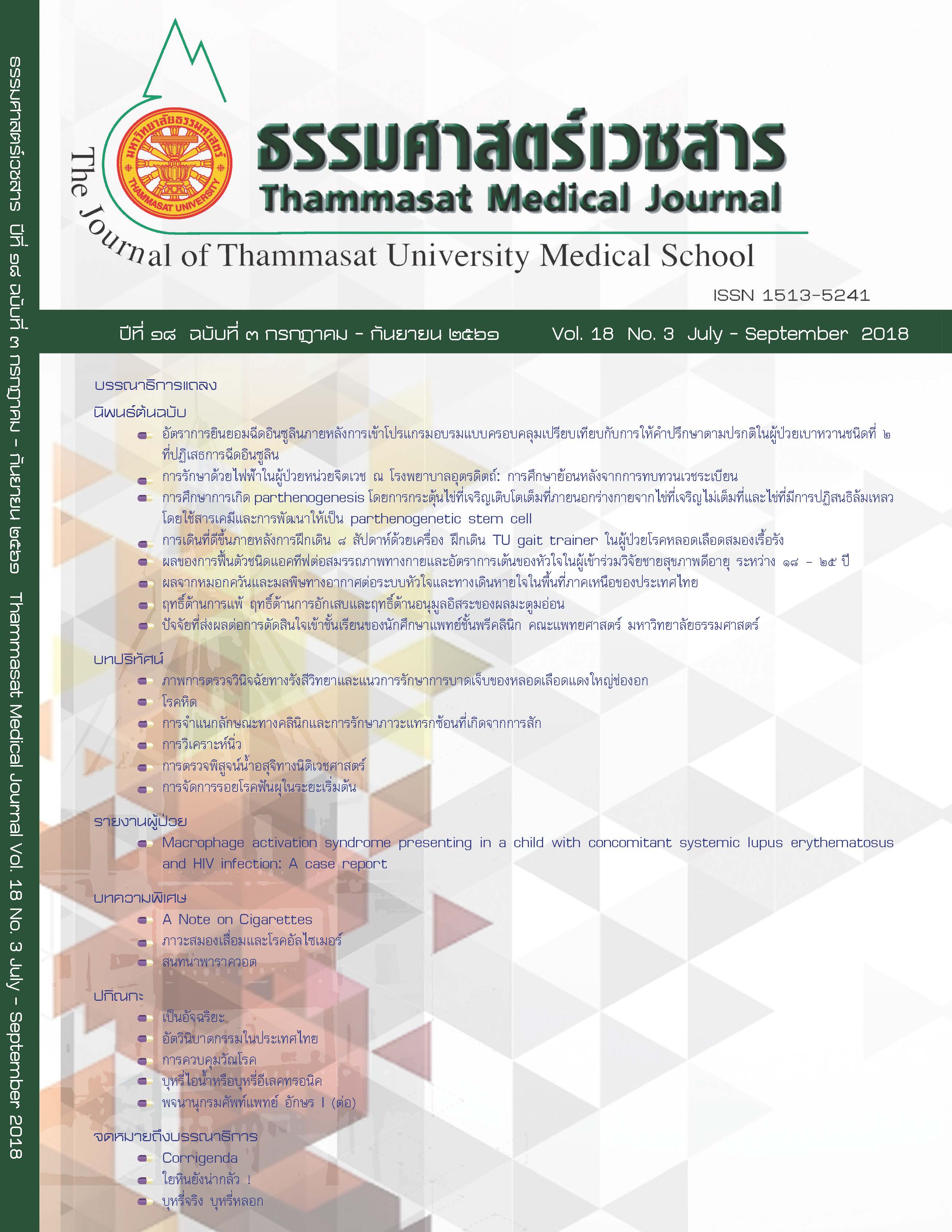Effects of active recovery on physical performance and heart rate in healthy male aged 18 - 25 years
Keywords:
Sport recovery, Physical performance, Wingate testAbstract
Introduction: Declines in force output during physical performances were due to accumulate fatigue and therefore highly effective recovery techniques would enhance athlete performance. This study aims to determine the effects of light-active recovery on physical performance and heart rate recovery during cycling.
Method: Eight healthy male university students randomly allocated to active and passive recovery. Participants performed a 30 s wingate test (1st Exercise) followed by a 15-min recovery interval in which participants were either performed light intensity cycling or sitting then again underwent a 30 s wingate test (2nd Exercise). Peak power and average work were recorded from 1st and 2nd exercises. Heart rate recovery was recorded at 1st, 3rd, 6th, 9th, 12th and 15th minute during recovery interval.
Result: Peak power and average work of passive recovery was lower whereas peak power and average work of active recovery was higher in the 2nd exercise compared with passive recovery (p < 0.05). Heart rate during recovery was higher in active compared with passive recovery started from the 3rd minute of recovery interval (p < 0.05).
Discussion and Conclusions: Study findings suggest that light-active recovery would manage to maintain the physical performance after strenuous cycling via heart rate during recovery closest to the anaerobic threshold although heart rate was higher than passive recovery.



